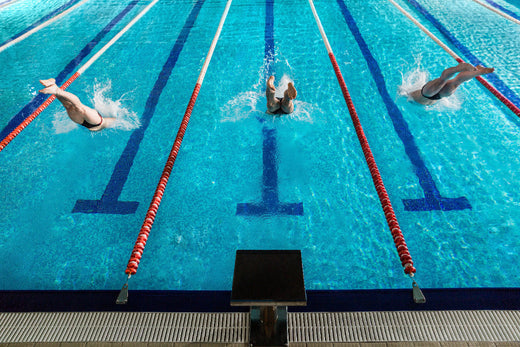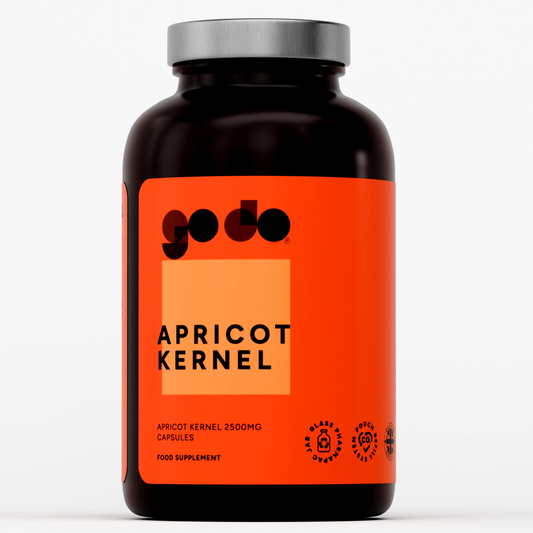What is a Good Swimming Pace?
A good swimming pace depends on your experience, distance, and environment. The best approach is to find your current pace and aim to improve over time, especially if you are among competitive swimmers. Focus on your swim speed and distance to determine what’s appropriate for you. Different swimming strokes impact your pace and speed in the water. A good swimming pace will vary depending on other strokes, your ability levels and the distance you’re swimming.

What’s a good swimming pace in the pool?
A good swimming pace in the pool depends on your ability levels and the distance you’re swimming. Freestyle swimming is often considered the fastest and most sustainable stroke for maintaining a good pace. Start by paying attention to your pace over various distances and note your speed. Pool length also impacts swimming pace, as the number of laps required to swim specific distances varies based on the pool's dimensions. Perform time trials over several distances to evaluate progress and compare results. Use these results as a baseline to determine an appropriate pace for you.
What’s a good swimming pace in open water?
- Swimming speed in open water is often slower than in a pool due to weather conditions and individual factors.
- Expect to swim 5-20 seconds slower per 100m in open water compared to a pool.
- Elite 10km open-water swimmers can finish their race in under 2 hours, with a pace of 1:12/100m.
- Adjust your expectations accordingly, as this is an elite level of performance.
Average Swim Times by Age and Ability
Average swim times by age can vary, with the average time to swim 25 yards being about 30 – 45 seconds for most people. The average 100m swim time by age group swimmers is 01:45 – 02:15. Use our average swim times by age tables for 25 yd, 25m, 50m, 100 yd, and 100m.
Short distance swimming, such as butterfly over very short distances, can significantly impact average swim times due to the variations in speed and endurance required for different strokes.
What do we mean by swimming abilities?
- Swimming ability is determined by a swimmer’s level of experience and skill.
- Here is a brief breakdown of the different levels:
- Beginner: Little to no experience, still learning basic strokes.
- Intermediate: Some experience, able to swim short distances with ease.
- Advanced: Significant experience, able to swim long distances with ease.
Average swim times by age for different distances
The average swimmer can complete a 25-yard swim in 30 – 45 seconds.
The fastest time for average swimming time by age 25 m (intermediate swimmers) is between 25 – 40 seconds.
Advanced and elite swimmers will swim slightly faster than this.
The world average swimming time for 50 meters is about 1 minute. Dedicated swimming training is crucial for Age Group triathletes to improve their swim times, as it addresses the unique challenges of balancing swimming with running and cycling.
Advanced swimmers will swim 50m in 40 – 60 seconds.
Average 100m Swim Time by Age
On average, swimmers will swim 100 yards in good time from 01:40 to 02:00.
However, yd times can vary depending on your age and ability to swim fast.
The average 100m freestyle swim times by age are between 01:45 to 02:15.
Beginner swimmers can cover this distance in a time spent about 3 to 4 minutes.
Average 100m swim times for different age groups
- The average 100m swim time for children (6-12 years) is 02:00 – 03:00.
- The average 100m swim time for teenagers (13-18 years) is 01:30 – 02:30.
- The average 100m swim time for adults (19-64 years) is 01:45 – 02:45.
- The average 100m swim time for seniors (65+ years) is 02:00 – 03:30.
Factors Affecting Swimming Times
A range of factors can affect your swimming times, including age, gender, abilities, and pool size. Starting swimming early in one's athletic journey is crucial, as mastering the unique skills required for swimming, such as balance and propulsion in the water, is essential for success. Efficient stroke technique is essential for optimal performance and swimming speed. The more experienced the swimmer, the faster the swim times. For context, the world record times for the 100m swim events, held by athletes David Popovici and Sarah Sjöström, highlight the outstanding achievements in the sport and provide a benchmark for competitive swimmers. In general, younger swimmers tend to be faster than older, experienced swimmers.
Technique
- Efficient stroke technique is essential for optimal performance and swimming speed.
- Focus on proper body position, arm and leg movement, and breathing technique.
Swimming ability
- The more experienced the swimmer, the faster the swim times.
- Advanced swimmers will swim faster than intermediate swimmers.
Age
- In general, younger swimmers tend to be faster than older swimmers.
- However, age is not the only factor affecting swimming times.
Water temperature
- The water temperature directly affects the swimmer’s performance.
- Swimming in cold water can slow down your swim time.
Water conditions
- Open water conditions are usually more difficult to swim in than pool conditions.
- Swimming in open water can slow down your swim time.
Improving Your Average Swim Time
-
Improving your average pace for swimming involves taking a holistic approach by refining your technique, building endurance and strength, and incorporating effective training strategies.
Work on your swimming technique
- The more streamlined your body is, the more efficiently you will move through the water.
- Focus on proper body position, arm and leg movement, and breathing technique.
Increase your swimming endurance
- Add interval training and drills into your training to build endurance.
- Incorporate strength training to improve your overall swimming performance.
Improve your strength
- Build strength by including resistance training in your training routine.
- Focus on exercises that target your upper body, core, and legs.
Focus on breathing
- Breath control technique is essential to optimize your oxygen intake and utilization of oxygen during swimming.
- Practice breathing exercises to improve your swimming performance.
Setting Realistic Swimming Goals
- Setting realistic swimming goals is essential for achieving success in swimming.
- Consider your current swimming level, goals, and available time for training.
Key Swimming Distances
- Typical swimming distances for comparison include 25 yards, 50 yards, 100 yards, and 200 yards.
- These distances are commonly used in swim meets and events.
Average Swimming Times for Beginners
- Below are tables presenting average swimming times for beginner swimmers across different age groups.
- These times are compiled from a variety of swim meets and events.
Focus on Personal Improvement
- These times are guidelines, not definitive standards.
- Each swimmer’s journey is unique, influenced by individual training, technique, and goals.
- The focus should always be on personal progress, enjoying the process, and celebrating individual milestones.

Understanding Swimming Speed
- Swimming speed is a measure of how fast a swimmer can complete a certain distance.
- Average swimming speed and its impact on swim times.
Average swimming speed and its impact on swim times
- The average swimming speed for a 100m swim is around 1:45 – 02:15.
- Swimming speed can vary depending on the distance, stroke, and individual swimmer.
How swimming speed changes with age
- Swimming speed tends to decrease with age.
- However, age is not the only factor affecting swimming speed.
How to maintain a consistent swimming speed
Maintaining a consistent swimming speed requires a combination of proper technique, efficient training, and mental focus. Here are some tips to help you achieve a steady pace in the water:
- Focus on Technique: Good technique is essential for maintaining a consistent swimming speed. Ensure your body position is streamlined, use a strong and efficient kick, and maintain a consistent arm stroke.
- Train at a Consistent Intensity: To keep a steady pace, train at an intensity that allows you to maintain your speed throughout the workout. This helps build endurance and muscle memory.
- Incorporate Interval Training: Interval training involves swimming at a high intensity for short periods, followed by rest or low-intensity swimming. This type of training can help you build endurance and maintain a consistent swimming speed.
- Use a Pace Clock: A pace clock can provide a visual cue to help you stay on pace. It’s a useful tool for tracking your swim times and ensuring you maintain a consistent speed.
- Focus on Your Breathing: Proper breathing technique is crucial for maintaining a steady pace. Take smooth, rhythmic breaths to stay relaxed and keep your swimming speed consistent.
- Stay Relaxed: Tension can slow you down and make it difficult to maintain a consistent swimming speed. Focus on staying relaxed and using your entire body to propel yourself through the water.
Swimming for Intermediate Swimmers
- Intermediate swimmers can improve their swimming performance by focusing on technique, endurance, and strength.
Tips for intermediate swimmers to improve their swim times
- Focus on proper body position, arm and leg movement, and breathing technique.
- Incorporate interval training and drills into your training to build endurance.
- Build strength by including resistance training in your training routine.

Age Group Swimming Considerations
-
Age group swimming is a great way to compete and improve your swimming performance.
How age affects swimming performance
Age can have a significant impact on swimming performance. As we age, our physical abilities naturally decline, which can affect our swimming speed and endurance. Here are some ways that age can influence your swimming performance:
- Decline in Muscle Mass and Strength: As we age, we naturally lose muscle mass and strength, which can impact our swimming speed and endurance. Regular strength training can help mitigate this decline.
- Decrease in Flexibility: Aging can lead to a decrease in flexibility and range of motion, making it more challenging to maintain a streamlined body position and efficient swimming technique.
- Changes in Body Composition: With age, body composition can change, leading to a higher percentage of body fat and a lower percentage of lean muscle mass. This can affect swimming speed and endurance.
- Decrease in Cardiovascular Endurance: Cardiovascular endurance tends to decline with age, making it harder to maintain a consistent swimming speed over longer distances. Incorporating cardiovascular exercises can help maintain endurance.
- Changes in Swimming Technique: As flexibility, strength, and endurance decline, swimming technique may also change. Regular technique drills and flexibility exercises can help maintain efficiency in the water.
Strategies for swimmers in different age groups
Different age groups require tailored strategies to achieve optimal swimming performance. Here are some strategies for swimmers in various age groups:
- Young Swimmers (18-24): Focus on building endurance and strength through high-intensity interval training and strength training exercises. This age group can handle more intense workouts and recover quickly.
- Adult Swimmers (25-44): Maintain a consistent swimming speed and endurance through interval training and strength training exercises. Balancing training with work and personal life is crucial for this age group.
- Masters Swimmers (45-64): Focus on maintaining flexibility and range of motion through stretching and mobility exercises. Building endurance through interval training is also important to counteract the natural decline in physical abilities.
- Senior Swimmers (65+): Maintain a consistent swimming speed and endurance through low-intensity interval training and strength training exercises. Prioritize joint health and flexibility to stay active and injury-free.
Using Swimming Data to Improve
- Using swimming data can help you set realistic goals and improve your swimming performance.
How to use swimming data to set realistic goals
- Use average swimming times to set realistic goals for your swimming performance.
- Consider your current swimming level, goals, and available time for training.
Analyzing your swimming performance to improve
Analyzing your swimming performance is essential for identifying areas for improvement and achieving optimal race results. Here are some methods to help you analyze and enhance your swimming performance:
- Use a Swim Watch or Pace Clock: These tools provide valuable data on your swimming speed and endurance, helping you track progress and set realistic goals.
- Track Your Workouts: Keeping a log of your workouts can help you identify patterns and trends in your swimming performance. Note your swim times, distances, and any challenges you faced.
- Focus on Your Technique: Regularly analyze your swimming technique to identify areas for improvement. Pay attention to your body position, arm and leg movements, and breathing technique.
- Get Feedback from a Coach or Swim Instructor: A coach or swim instructor can provide valuable feedback on your technique and performance, helping you make necessary adjustments.
- Use Video Analysis: Recording your swims and reviewing the footage can provide a detailed analysis of your technique and performance. This visual feedback can be incredibly helpful for making improvements.
By incorporating these strategies and regularly analyzing your performance, you can make significant strides in your swimming journey and achieve your personal best.





